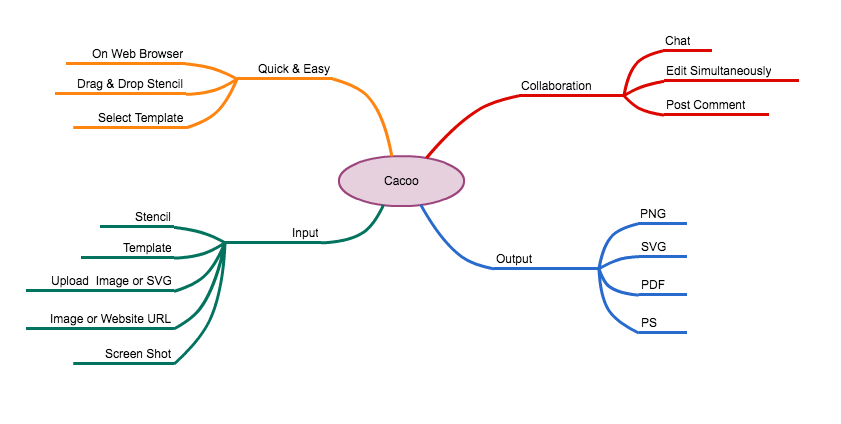Dynamic diagramming for every industry
Cacoo Staff
December 15, 2021
On the surface, the health care, filmmaking, and retail industries probably seem to have nothing in common. But if we pulled out a Venn diagram, we’d soon discover that THAT is exactly the thread they share: a need for dynamic diagramming.
Think of the multitude of processes that keep a business running. Staff workflow. Resource management. Scheduling. Data visualization. When you get down to the details, every business can certainly benefit from diagramming.
But how can your particular industry use diagramming tools to maximize production and communication? Follow the thread to Cacoo, a dynamic platform all industries can explore to stitch together compelling diagrams that add depth to any project or process.
Why diagramming is crucial for business success
Poor organization is the downfall of a good business plan. You might have an excellent idea and products that are in demand. But if your business lacks solid structure and communication, it isn’t likely to succeed or even survive. So, how do you combat problems and stay on top of business processes?
One option is to diagram the most vital processes keeping the business alive.
Let’s say you work in an industry with many compliance standards. In most cases, you have to invest time and resources into getting your products, services, and procedures up to code. By diagramming the process, you can ensure all staff know the correct steps to complete a process. You can easily update the diagrams whenever standards change and keep everyone informed.
Companies handle a LOT of information, which gets interpreted by diverse groups of people. Visuals can eliminate confusion and clarify processes that depend on a variety of moving parts. Over time, you build up a treasure trove of resources that save time when your business or workforce grows.
Read on for examples of how to incorporate diagramming in a range of industries.
Health care
Health care systems are intricate networks of people and processes. Not only does the industry depend on strict protocols to keep others healthy. Financial and resource management processes are just as important.
From check-ins to exams, doctors to patients, hospitals to pharmacies, there are many systems within the system. Each one relies on the other for the whole system to keep flowing and reach max potential. So, it benefits this industry immensely to use diagramming as a form of organization.
A flow chart is a great place to start when modeling the workflow. In the diagram below, created by Ashim Sikder in Cacoo, you can see every person, place, and interaction of an inpatient experience, from check-in to the pharmacy. Another guide is available in this series of in-depth flow charts and diagrams from the U.S. Department of Health and Human Services. Use the tools to get inspiration and create a personalized chart for your system.
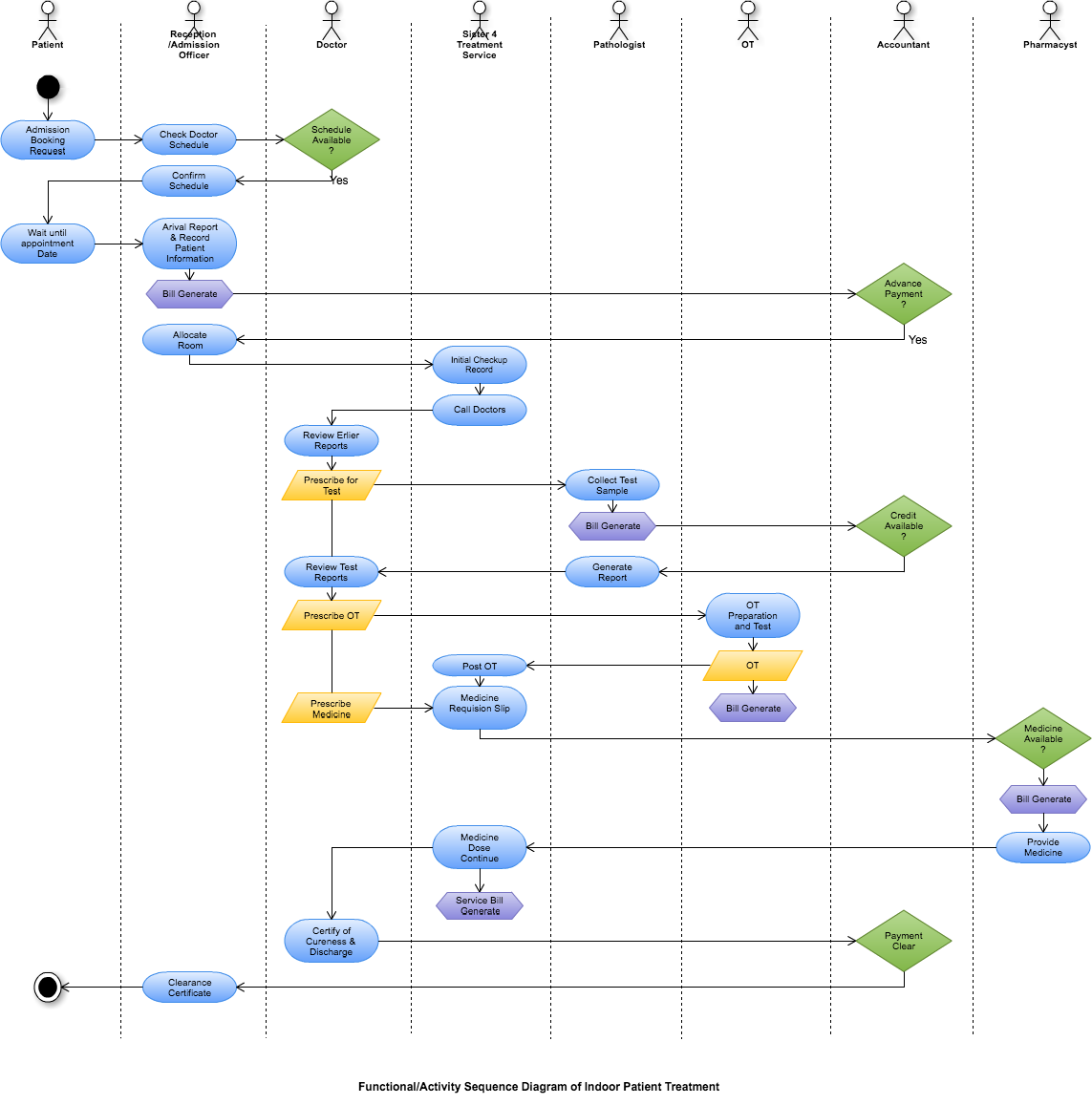
HRMS and Accounts Module Collaboration, Cacoo Template created by Ashim Sikder
Diagrams are also perfect for creating organized patient charts with body illustrations, checklists, and detailed graphical documentation. You can even use graphs to track patient progress or medication. Diagrams help to highlight relevant data and unite the patchwork of communications across a health care organization.
Film & TV
From development to post-production, there are many hands involved in a single film, tv, or commercial project. Gantt charts should be your go-to tool for plotting a project timeline. You can start with big milestones and work down to the daily schedules of the crew, ensuring all deadlines are met.
The film industry offers countless opportunities to be creative with dynamic diagramming. In fact, visuals are often a core piece of the production process, starting with story development.
The personality of a beloved character begins with dynamic character mapping. Cacoo diagrams make it easy to visualize the depths of your character digitally. For example, mind maps are perfect for listing a character’s traits, beliefs, fears, and motivations. As the person evolves, you can edit the canvas, export the diagram, and share it with the creative team.
Storyboarding is another process that is more engaging with dynamic diagrams. Consider the diagram below, made by 坂井孝介@Thinkgear, as an example. Once created, you can export the visuals and print the template or use the tools and stencils in Cacoo to fully develop your storyboard. If you’re collaborating with a team, each member can access and edit the diagram at any time.

Japanese storyboard, Cacoo Template Created by 坂井孝介@Thinkgear
Imagine the unlimited applications for diagramming in the film industry. With the available stencils and dashboard tools, you can design an attractive set layout. Location scouts can create charts to manage the details of shoot locations. And of course, prop masters can draft compliance diagrams to demonstrate how to use and store sensitive props. Whether or not the camera is rolling, diagrams add character to a production.
Retail
The retail industry wouldn’t exist without inventory, and managing it well is crucial to keep up with client demand. With Cacoo diagrams, it’s convenient to outline the processes involved in stocking goods.
Create an inventory report diagram and share it with key employees. They can update the document in real time, so you always know what’s available to customers. Another option is to transform dense data into compelling sales or supply-and-demand graphs. That way, you’ll stay informed about what items you need, the right amounts to order, and pricing trends for healthy profit margins.
There’s more to your store than just goods and services. A store has a distinct personality and ambiance that reinforces the retail experience you aim to provide. Use diagrams to plan the store displays and layout, and update them for different seasons and promotions.
By planning before shipments arrive, you’ll know in advance where to set up incoming items. You can also model the flow of foot traffic in the Cacoo canvas to improve the design of store lanes. Then, use these same blueprints to create an emergency evacuation plan. In the unlikely event of an emergency, staff and customers will know how to safely exit the building.
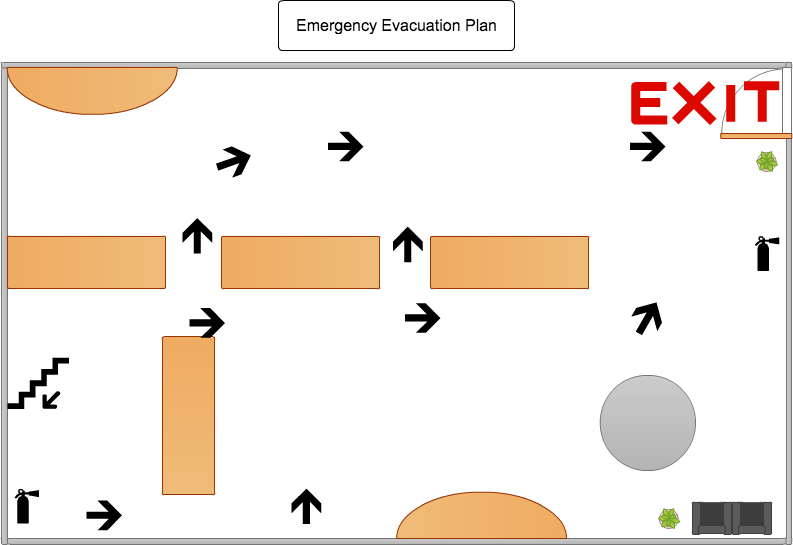
Finance
Finance professionals are trained to master the delicate balance of crunching numbers. On the other hand, clients are often less financially savvy and rely on transparent data to understand their portfolios. Diagramming is an invaluable resource in finance because visuals can convey complex data to people with varying levels of knowledge.
When working with clients, use graphics to illustrate assets and growth. Provide a precise representation of financial data to accompany statements and inquiries. Financial planners can use Cacoo to easily create bar graphs, pie charts, or trend reports for clients who like to stay on top of their finances.
Diagrams are also ideal for tracking stock market trends through charts and graphs. Visual charting of daily, weekly, or long-term data is a great tool for a stockbroker to help clients understand the market and their stock portfolios.
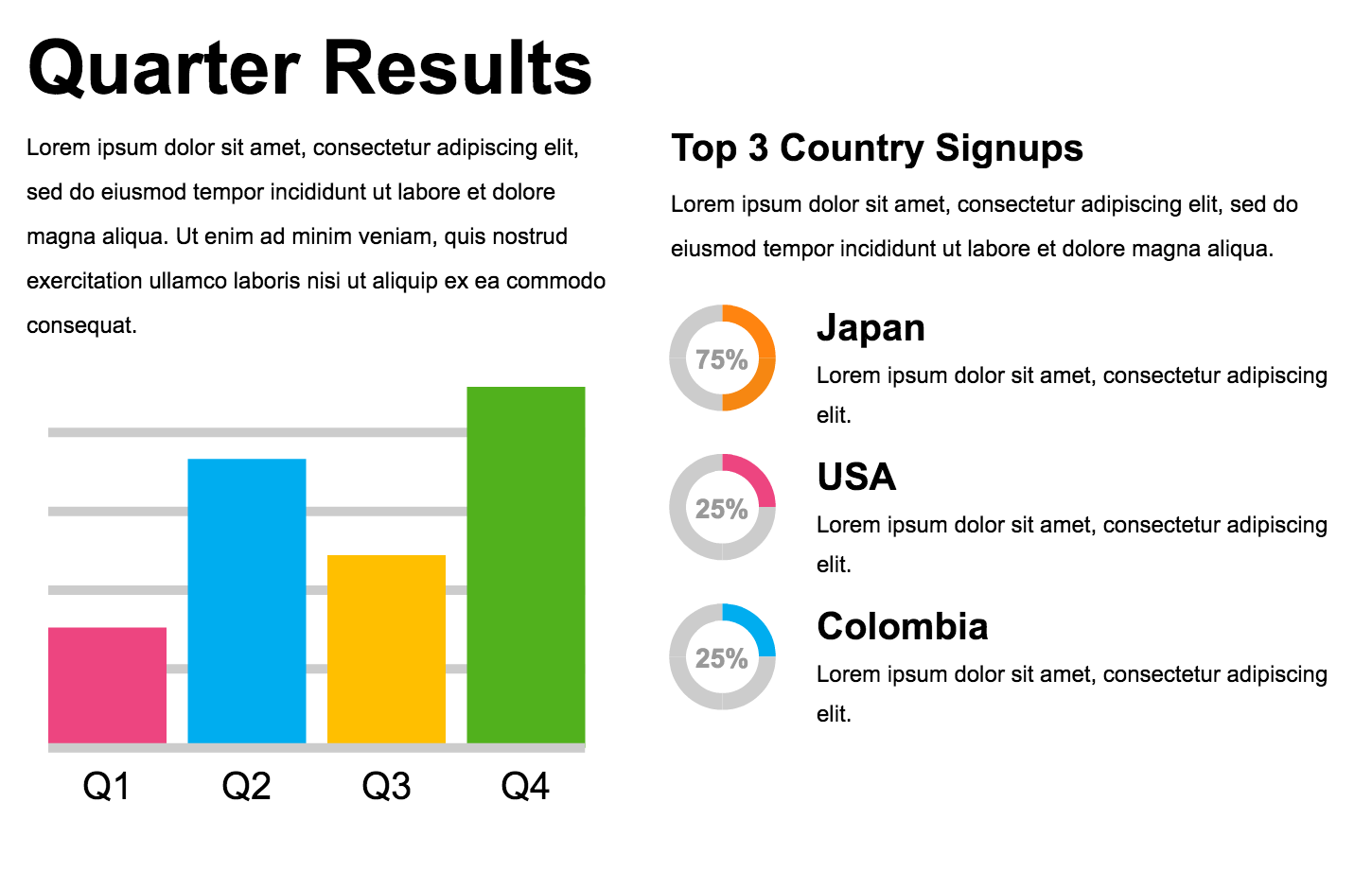
Presentation, Official Cacoo Template
Tech
For front- and back-end developers, diagrams are the building blocks for any project. From the initial wireframe to the final product, diagrams inform every step of the design process. For example, sitemaps and flow charts provide the framework for every website project.
In web design, you have to know how every page, link, button, image, form, or content affects the flow of the user experience. The same goes for apps and games. By knowing the path you need to take, there’s a better chance you will arrive at the correct destination.
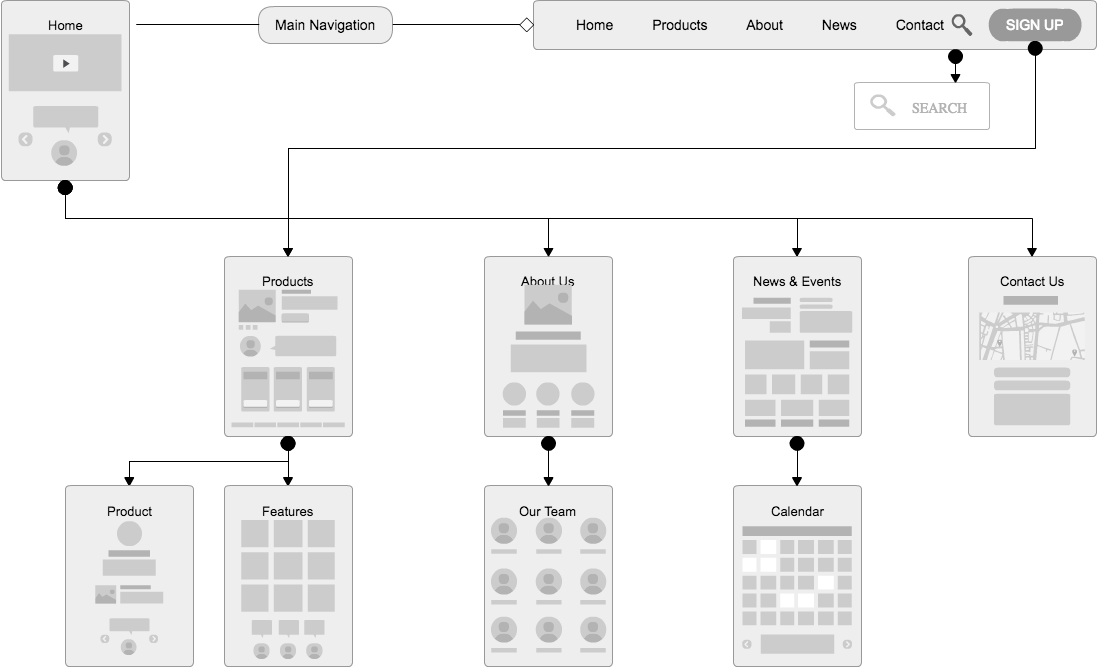
Sitemap, Official Cacoo Template
With the flow established, the next step in development is to construct a wireframe and create a visual prototype of the product. As a developer, you can complete the entire project from start to finish without leaving Cacoo. Open a new sheet and add a template, or create your own diagram from scratch using the tools and stencils. Once your wireframe is ready, it’s time to dive into the code.
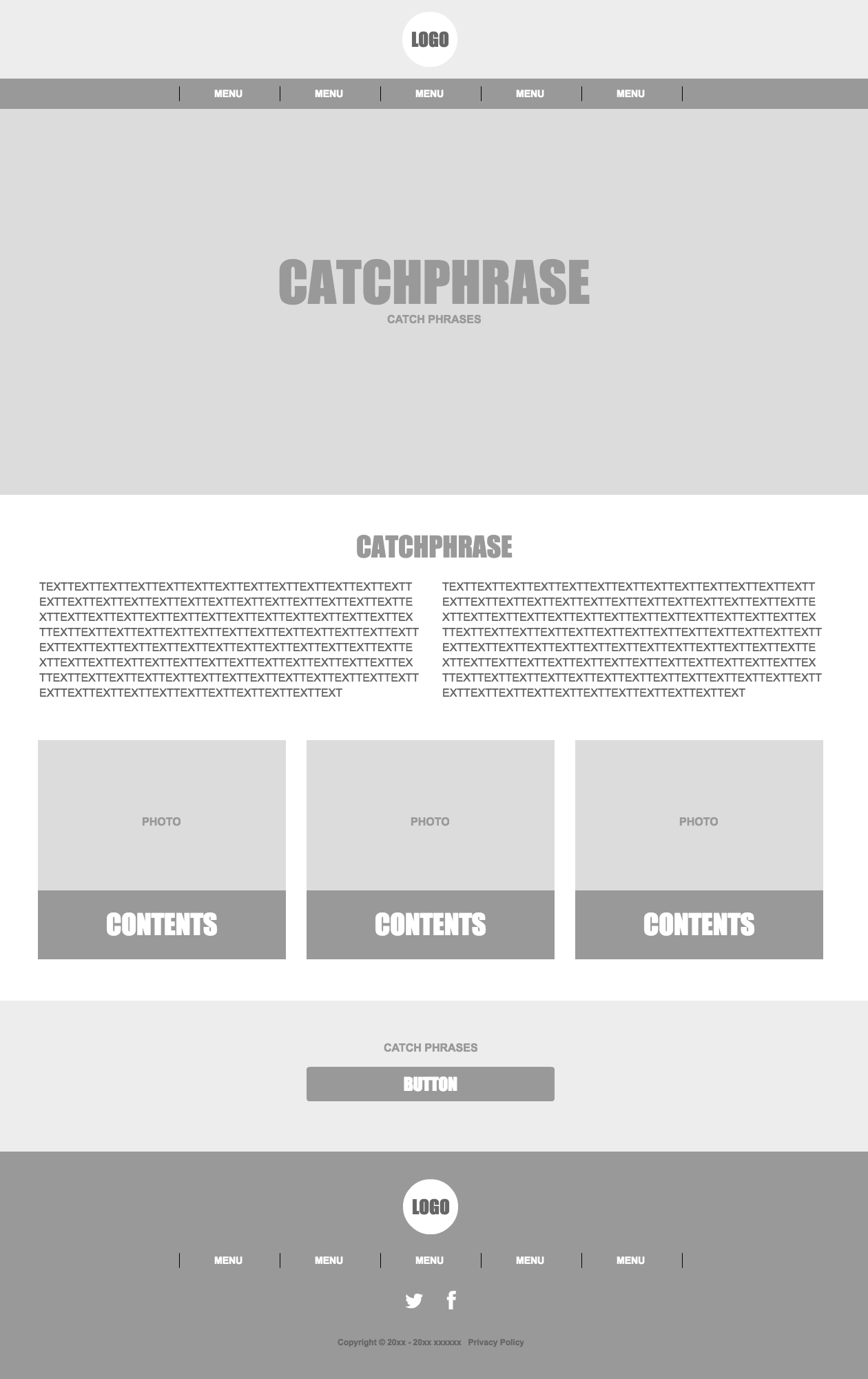
Wireframe 2, Official Cacoo Template
Diagramming is a powerful tool for any industry. You can use our toolkit full of an assortment of lines and stencils to create a diagram that gets the job done.
Featured Image Photo Credit: paperbits via Visualhunt / CC BY-NC-ND
This post was originally published on July 15, 2016, and updated most recently on December 15, 2021.


